Search Engine Optimization (SEO) is all about making websites better understood by search engines instead of merely hoping they would figure it all out by themselves. It’s both an art and a science, and many technical SEO aspects provide an important part in how your website ranks.
While many algorithm updates and policies remain obscured, Google does provide some performance indicator insights into future search engine visibility of large sites in Google Search Console.
Read on to discover my top five SEO performance indicators that matter--and how to read their signals:
1. Page Download Speed 2. Pages Crawled Per Day 3. Sitemap Pages vs. Indexed Pages 4. Crawled Pages vs. Indexed Pages 5. Structured Data1. Page Download Speed
User experience focused Internet companies are obsessed with speed and Google is one of them. A number of studies such as this one on the impact of HTML delays have demonstrated that latency kills conversion with users, even long term. With faster devices and Internet connections becoming widely available, user tolerance for latency has declined in the years since.
This is why page download speed matters tremendously. Google Search Console (GSC, formerly Google Webmaster Tools) indicates the average time required for the Googlebot to crawl a page. The aim must be at keeping the value as low as possible, preferably consistently under 500 milliseconds.
Increasing values such as indicated on the graph down below alarmingly exceed benchmark parameters and will likely over time reduce the number of pages crawled per day.
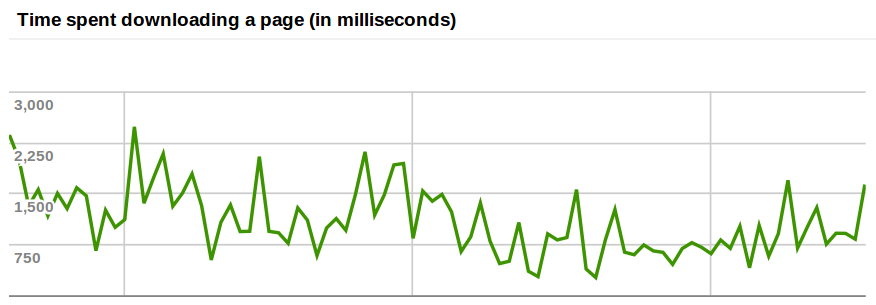 500 milliseconds is currently a good benchmark value for page speed
500 milliseconds is currently a good benchmark value for page speed 2. Pages Crawled Per Day
The faster the website, the more likely it can handle more connections for Googlebot. The average volume of pages crawled by Googlebot on a single day tends to be in decline if the average page download speed goes up as Google tries to automatically figure out what is a safe margin to crawl the website in question.
These two values are a strong signal that a website is not living up to its full potential, neither in Google’s organic search nor for its users. Both indicators combined and failing growing time spent downloading and fewer pages crawled per day almost always indicate site performance issues that are likely to impact organic search visibility over time. Infrastructure and architecture must be examined and will have to be improved in order to revert these trends.
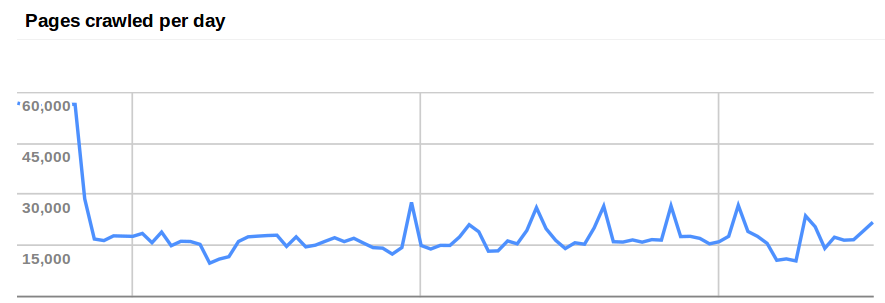 Google Search Console indicates the number of pages crawled daily
Google Search Console indicates the number of pages crawled daily 3. Sitemap Pages vs. Indexed Pages
Significant discrepancies between the number of the indexed pages and the pages in XML Sitemaps submitted to GSC can indicate serious SEO issues. These can range from having too many orphan pages, a broken internal linking structure, duplicate content, or slow page speed, to name just a few. There are many reasons why Google may not crawl and/or index all the URLs listed in the XML sitemaps. To get the most useful data possible from the GSC Sitemaps feature, it's imperative to submit all unique canonicals of the website in the XML sitemaps and when possible divide the XML Sitemap by type of URL into several files to submit each independently to GSC, that way where the discrepancies on the website occur can be better identified.
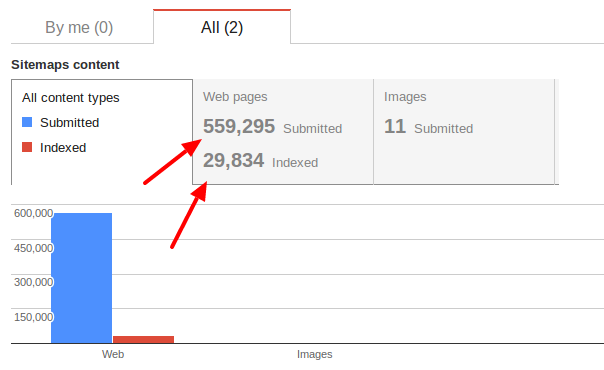 The growing discrepancy between submitted and indexed pages indicates a serious issue
The growing discrepancy between submitted and indexed pages indicates a serious issue 4. Crawled Pages vs. Indexed Pages
Another important indicator for site performance is the ratio of pages crawled per day vs pages indexed in Google. The value is the answer to an important question: how many pages does Google need to crawl to index and rank just one? Experience shows that for large, commercial sites a ratio of 10/1 is a reasonable value. Ten to one hundred times less favorable ratios are unfortunately not unheard of.
If identified, such trends may indicate site resources are not being used efficiently, possibly due to structural and content issues, which are likely to negatively impact site performance in organic search.
In short: the site’s true SEO potential is not being fully explored. Managing a site's crawler budget more efficiently will however require a step beyond evaluating GCS data and diving log files in order to identify which pages are being crawled by the Googlebot.
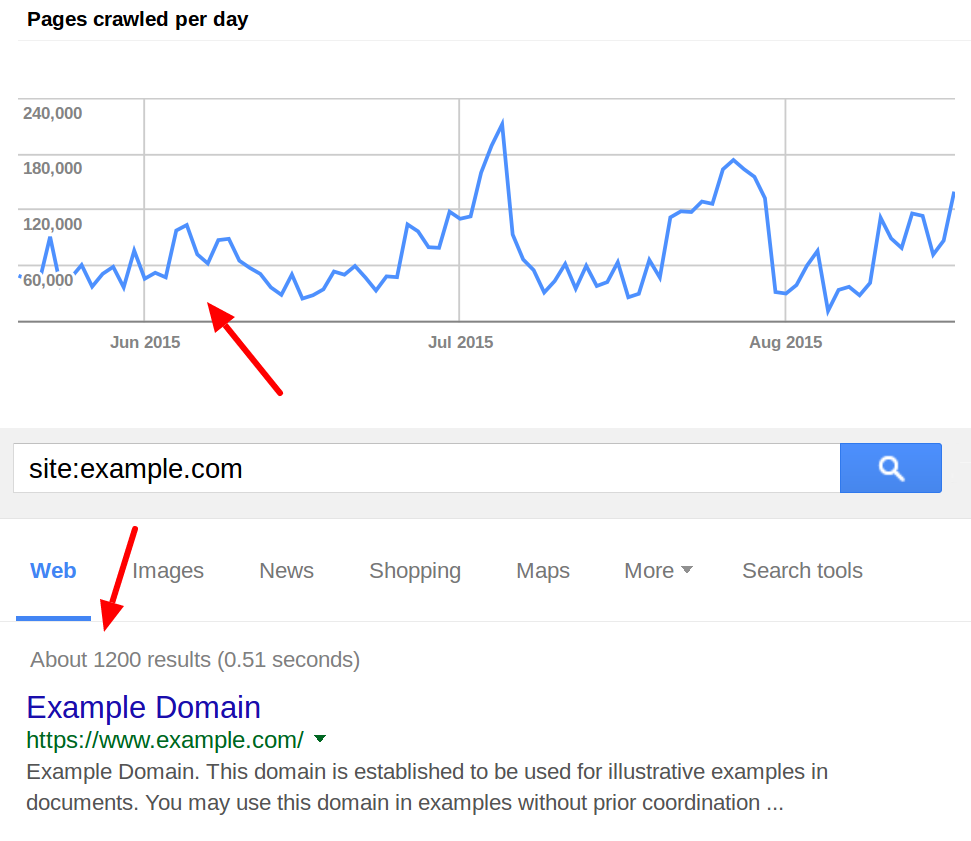 How many pages does Google crawl to index one?
How many pages does Google crawl to index one? 5. Structured Data
There are few good reasons for site-wide structured data, such as structured breadcrumbs or the organization schema, to be in decline unless recent content review initiatives lead to a widespread noindexing. The structured data trend in GSC, compared against both pages submitted through sitemaps and against the number of pages actually indexed, can be a site health indicator.
Once again significant deviations may indicate inconsistent structured data or worse, crawling and indexing issues holding a website back in organic search.
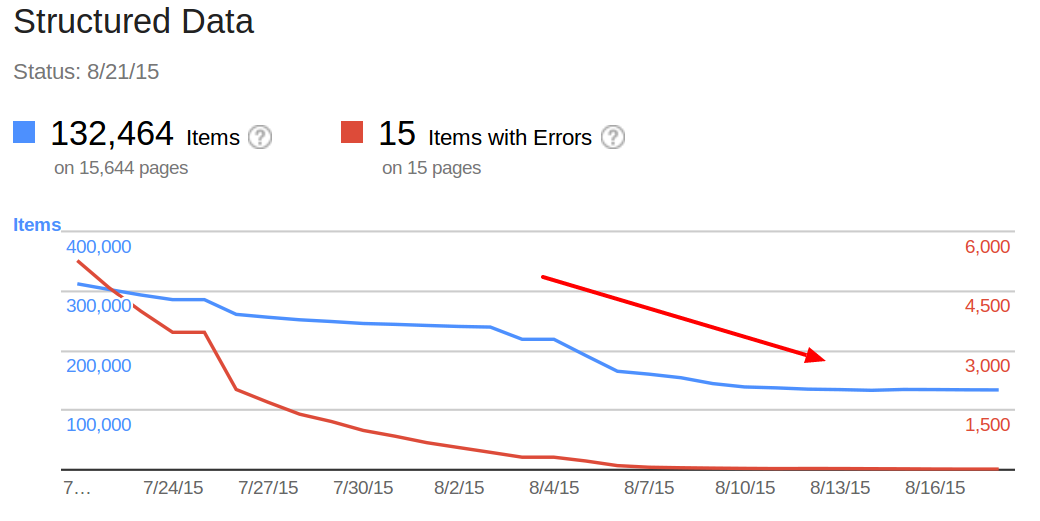 The decline in structured data over time may indicate site health issues All of the SEO performance indicators from Google Search Console allow a glimpse into how well a large site does in organic search, they rarely work for small sites that can not provide enough data to draw any actionable conclusions.
The decline in structured data over time may indicate site health issues All of the SEO performance indicators from Google Search Console allow a glimpse into how well a large site does in organic search, they rarely work for small sites that can not provide enough data to draw any actionable conclusions. It is important to keep in mind that while Google Search Console is an indispensable and free SEO data source it is anything but failsafe and that the data provided must be considered with a grain of salt. Occasional spikes, may or may not indicate an issue.
Google also experiences problems sometimes. Similarly, seasonal variations may play a part and must be factored in. It’s important to keep in mind that any improvements introduced to a site can result in new trends becoming visible only weeks or even months later.
Google SEO performance indicators mentioned above are among the proven SEO targets that no large website can ignore and that allow for drawing actionable conclusions based on Google data over time.
Innovative SEO services
SEO is a patience game; no secret there. We`ll work with you to develop a Search strategy focused on producing increased traffic rankings in as early as 3-months.
A proven Allinclusive. SEO services for measuring, executing, and optimizing for Search Engine success. We say what we do and do what we say.
Our company as Semrush Agency Partner has designed a search engine optimization service that is both ethical and result-driven. We use the latest tools, strategies, and trends to help you move up in the search engines for the right keywords to get noticed by the right audience.
Today, you can schedule a Discovery call with us about your company needs.
Source:




![How To Create a Strategic Dashboard in Excel Using Semrush Data [Excel Template Included]](https://new.allinclusive.agency/uploads/images/how-to-create-a-strategic-dashboard-in-excel-using-semrush-data-excel-template-included.svg)
